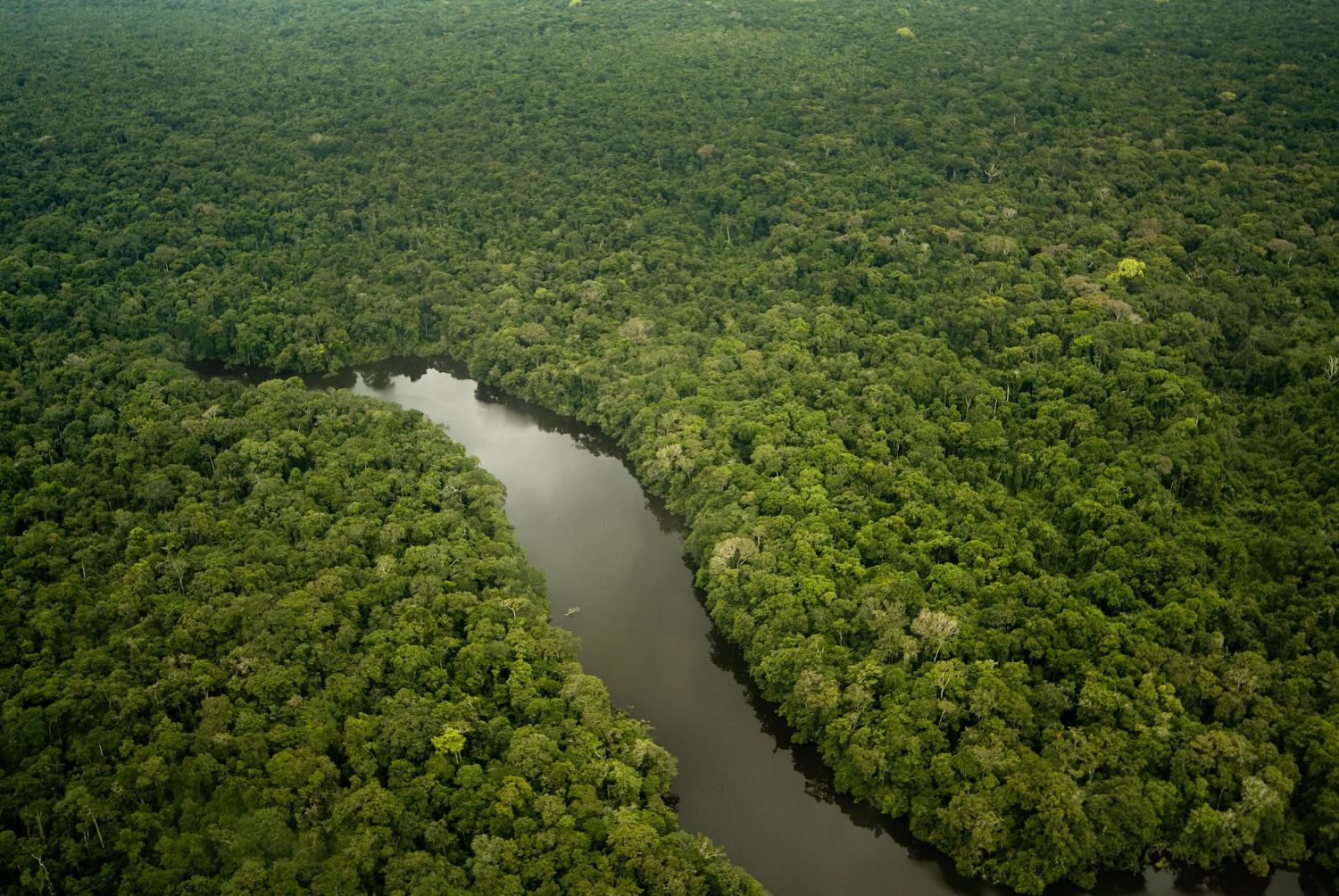Share this @internewscast.com

The giants of the Amazon are getting even bigger.
The latest comprehensive study reveals that the largest trees in the rainforest are not just surviving but thriving, showing growth in size and numbers while continuing to play a crucial role in battling the effects of climate change.
Scientists discovered a 3.3% growth in the population of large trees per decade after examining 188 untouched forest plots across the Amazon over the last 30 years.
Nearly 100 researchers from 60 universities in Brazil, the U.K., and other countries collaborated on these findings, which were published in the journal “Nature Plants” on Thursday.
The authors attributed the growth to the rising amount of carbon dioxide in the atmosphere from the burning of gas, oil and coal.
While the study offers evidence of the forest’s resilience against climate change, experts caution that these large trees remain at risk due to the increased occurrence of droughts, lightning strikes, and fires, along with ongoing deforestation.
Big trees were once thought to be especially susceptible to climate change, according to Riane Esquivel-Muelbert, a lead author of the study, in an interview with NBC News. “However, they appear to be demonstrating notable resilience,” she noted.
“We aren’t observing them dying off,” stated Esquivel-Muelbert, who contributed to the study while at the University of Birmingham in the U.K. and has since joined the University of Cambridge. “Indeed, they are both growing larger and increasing in number.”
Scientists stressed that while protecting intact forest areas was essential to stabilizing the climate, the Amazon cannot on its own offset the vast amount of carbon dioxide produced worldwide by cars, factories and power stations — and it remains under threat.
The rainforest is a carbon sink, meaning it stores more carbon than it produces. Pushing the rainforest past its limit could accelerate climate change and have terrible consequences for local communities, including Indigenous groups who depend on it.
Esquivel-Muelbert stressed it was difficult to predict how worsening climate change would have an impact in the future, and hesitated to say that increased CO2 benefitted the forest, warning it may cause bigger trees to become more exposed to other factors like drought.
“We don’t know the consequences in the long run,” she said.
Other factors, including deforestation, remain a colossal risk to the health of the Amazon.
Fattening trees is, in some ways, a “positive news story,” said Rebecca Banbury Morgan, a lead author of the study from the University of Bristol. But it also means that the forest is now “more vulnerable to losing those trees.”
“Although we have shown that trees in intact forest are still increasing in size, any benefits of this in terms of the carbon sink can be quite easily negated by deforestation and logging impacts, so preserving these intact forests is really a priority,” she told NBC News.
Wildfires, deforestation and global warming could permanently destroy the water cycle that sustains parts of the Amazon rainforest if action is not taken in the coming decades, according to a separate study published last year in Nature.
The study suggested that 10% to 47% of the landscape is at risk of transitioning away from rainforest by 2050 if warming and rates of deforestation aren’t dramatically curbed.
Brazil’s Congress approved a bill in 2023 to relax environmental licensing to pave a highway cutting through the heart of the Amazon, and close to one of the last regions that still has large areas of pristine forest
Losing a large portion of the Amazon could turn a key carbon sink into a source of emissions, as wildfires burn and plants and animals decompose, no longer able to survive.










